Neyyah review
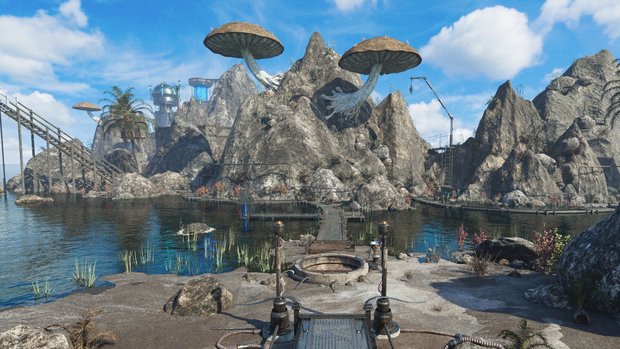
- 0 Comments
Our review helps answer whether it’s nay or yea on this beautiful, unapologetically retro Myst-style indie adventure
When Cyan unleashed Myst in 1993, its impact on the game industry was astronomical. With its unique world stuffed with enigmatic lore, surrealistic visual design powered by the era's most cutting-edge tools, and some rather mind-melting puzzles that kept players rapt at their monitors (or caused them to quit in seething rage), Myst completely and irrevocably shaped the landscape of CD-ROM based games. Depending on whether you're a lover or hater of the series, Myst's runaway success could be called revelatory, or perhaps cataclysmic. It wasn't the first game to use its formula, but its unsurpassed fame ushered in an enduring subgenre for adventure gaming: the slow-paced, meditative, obtusely difficult "first person thinker."
While Myst’s influence is still felt in games to this day, the popularity of its imitators began to fizzle out in the 2000s, relegating “Myst clones” to the realm of indie passion projects, rather than big-budget forays from large studios. And it’s hard for a project to get much more passionate than a game like Neyyah, the seven-years-in-the-making, one-man labor of love by Defy Reality's Aaron Gwynaire. Much like the name of Gwynaire's studio, the game's very existence seems to be a small act of rebellion against the modern gaming landscape to instead work within the technological limits of the mid-90s. But Neyyah (which phonetically sounds a bit like the noise someone who doesn't care for Myst adventures might make if you tried to make them play one) proves that the ingredient necessary to make "tribute" transcend "imitation" is a generous scoop of unbridled enthusiasm. Something Gwynaire’s game packs in abundance.
More specifically, Neyyah is a loving homage to 1997’s Riven, Cyan's superb sequel to Myst that dialed down the original's abstract surrealism and focused its energy on crafting a singular, stunningly immersive world stuffed with an authentic sense of human culture. Neyyah doesn’t just wear the influence of Riven on its sleeve; it copied its haircut and bought the same shoes, too. It takes place in a very Riven-esque setting and strives as hard as it can for an experience that feels like it could have been designed by Cyan in a parallel timeline. But while that could have been a gimmick – and heck, maybe on some level it is – it’s mostly an excellent experience, if not without its flaws, making it a wonderfully nostalgic surprise rather than some sort of stale time capsule.
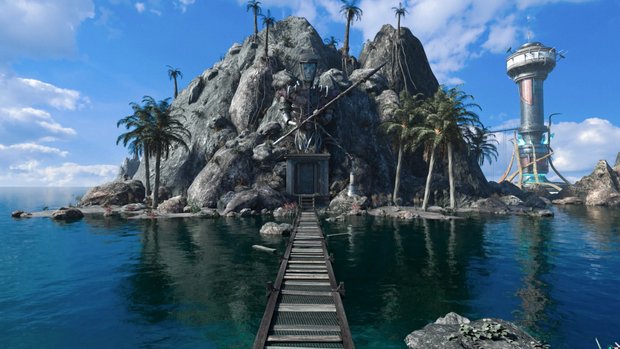
Just as players did thirty years ago, you'll explore the environment through static, pre-rendered images, clicking to move forward along paths or interact with objects, and turning left or right in rigid 90-degree increments. Going back to the slideshow format is a big gamble for a game releasing in 2025, but Gwynaire's admirable commitment to that vision pays off. The pre-rendered, almost photorealistic graphics deliver beautifully composed angles that make the world look its best, and the sound design is so rich that our minds effortlessly fill in all the visual gaps. As nice as the past few decades of technological advancements are, Neyyah proves that we really don’t need fancy realtime graphics to make this sort of adventure game work well, and at no point did I feel like the game would have been better if it had been made with free-roaming 3D gameplay.
The story of Neyyah is simple and largely left in the background. You mysteriously arrive at the titular foreign world in distress from a colonizer hell-bent on subjugating it, and slowly, through accumulating information from many journals and video messages scattered around a cluster of islands, come to understand what you must do to both escape back to your own world, and to set things right in this one. Quite standard stuff, but it gets the job done.
The first hour or so limits you to a narrowly defined path of exploration, and the game wasn't quite clicking with me for a bit. However, once past a certain moment, portals all around the island hum to life and allow for a much more open-world experience, where you're free to visit areas you don't even have a clearly defined reason to go to yet. And that feeling of exploration is where the game really gets to strut its stuff.
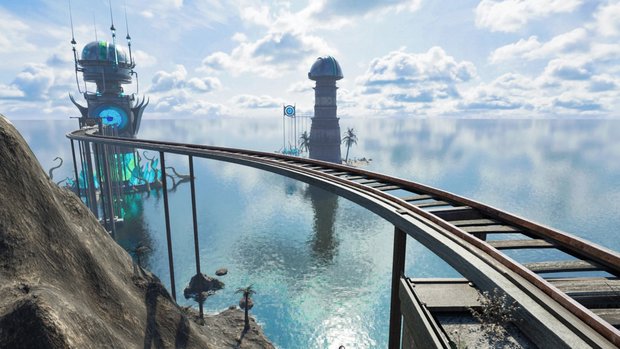
With the freedom to tackle a plethora of tasks in the order of your choosing, you'll get numerous objectives in your journal (unless you've chosen to disable any handholding with the highest difficulty mode). This structure can give you a lot to mentally juggle, but I ultimately found it fun. Sometimes, in order to make progress, I wasn't able to immediately recall where I needed to go and how to get there.... I had to bumble around the islands a bit, until I found myself reaching the right area partly by chance. This might have quickly become a chore if the experience of wandering around wasn't enjoyable, but thanks to the game's pleasing music and lovely atmosphere, I didn't mind.
The soundtrack, a father-and-son collaboration also headed by Gwynaire, is understated but very effective, leaning heavy into ambience and never calling much attention to itself. Each of the Myst games tended to have some tunes that stood out more than the subtler sounds on offer here, but Neyyah’s score certainly fits the world’s vibe well. There’s also a truly gargantuan amount of music, with each of the many key areas getting its own atmospheric piece, giving the sonic landscape plenty of variety. For proof, just take a look at the game’s nearly three-hour-long, 83-track OST... I don’t think I’m even aware of another game with a soundtrack that vast.
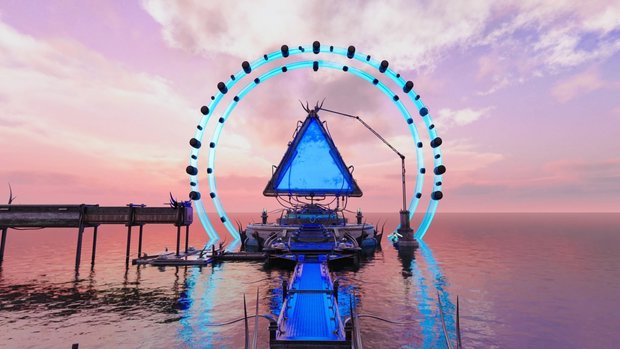
The visuals are a total treat. The wild, steampunk-meets-alien architecture vibe certainly shines through Gwynaire's lens, which captures the wonder of shimmering caves, serene beaches, and even some animated rollercoaster-style thrills when entering some of the island’s methods of transport. And with much of the game's man-made lighting, mystic portals, tranquil waters, and phosphorescent plant life, there's a bit of an obsession with the color cyan as a visual motif. It's an unconventional choice that makes it visually distinct, and whether intentional or not, I couldn't help but take it as a charming little nod to the giants upon whose shoulders Neyyah stands.
Another area where this game strives hard to evoke Myst and Riven is through its use of FMV sequences with real actors dressed up in costume. It's a fun choice, and ultimately feels like the right one, even if the acting quality itself is a bit of a mixed bag. Some of the performances are fine, some are pretty hammy, and most... are a bit of both! Existing only in brief, postage stamp-sized videos embedded into the scenes, Myst's acting was never considered award-worthy, but it did have a quiet sense of gravitas, especially in Rand Miller's central figure Atrus. Neyyah isn't bound by the same hardware restrictions of the early QuickTime video era, and its use of full-screen close-ups of characters talking to you (or to their video journals) ends up lacking the nuance of its inspiration.
The cast of Neyyah also seem to skew quite young and clean-cut, which took me out of the world that was otherwise so painstakingly crafted to feel real. Perhaps making one or two more characters visibly middle-aged or older would have lent a little more credibility to the idea of Neyyah being an ancient culture. However, the lead antagonist Smollax, whom you mainly get to know through an extended series of video logs, is a delight in his mustache-twirling, punchably smug villainy. It's hard not to be charmed by someone who revels so much in being a baddie. He doesn't hit the heights of Brad Dourif's brilliant role in Myst III: Exile (an unfairly difficult bar to reach), but his appearances give the game a very engaging, borderline campy sense of fun that varies the tone for the better.
There are lots of fun throwbacks within the interface as well. Just like Cyan's best work, Neyyah's sound design is sublime, and that extends to the little details like clicking around menus. I especially loved the mildly hair-raising electronic shriek when booting up the portable "Pelska Portal" device. It's almost as memorable as Myst's deep, otherworldly whoosh noise that happens when you use a linking book. And the game's magnifying glass icon (for zooming in on key hotspots) is even reminiscent of the old cursor icons in early versions of the Mac operating system; another cute nod to the era of Myst.
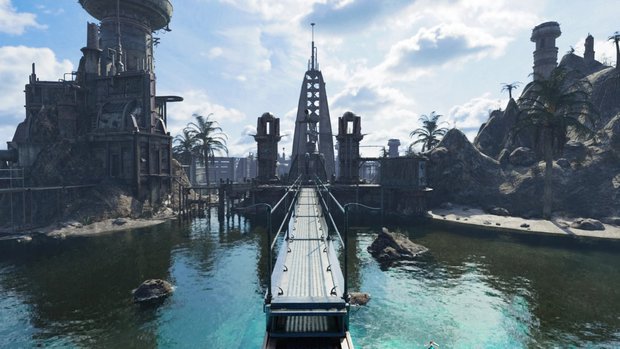
But while Neyyah may be about as faithful as Myst-likes come, it does add a few embellishments of its own to the time-honored formula. For example, some purists may find it sacrilegious that this game has a plethora of inventory items (gasp!) that must be sought out, picked up, and used to solve many of the puzzles. That's a point-and-click staple, but totally unheard of in a true Myst game. Gwynaire also decided to choose function over minimalism in the interface, adding helpful information to the cursor when moving to the edge of the screen to tell you whether a turn will rotate you 90 degrees or a full 180 before you do it. That's a marvelously helpful (yet subtle) feature that kept my sense of direction nicely intact when navigating otherwise labyrinthine corridors.
I do have a few game design nitpicks. None of them cause too much trouble on their own, but taken together the flaws bring down the experience a little from what it could have been. As much as I loved the slideshow aspect of the game, there were times when the visual compositions obscured some crucial points of interest, which could have been made clearer with some small camera adjustments. I took many trips through one central hub zone without knowing there were important machines to interact with on either side of the walkways. Because each click transports you a pretty large distance in this particular zone, these machines were only noticeable from quite a ways off, when they're very small on-screen. When you arrive at the node where you can actually use them, you're required to do a 90-degree turn to actually see that they're there. I call foul on that, mainly because I was only reminded of their existence thanks to a walkthrough.
True to form, there's a LOT of reading in Neyyah, much of it optional, where the important nuggets are sometimes buried in tomes that feel triple the length they should be. These journals are well-written, but also loaded with deep lore and unfamiliar lingo that I usually couldn't decipher. Many passages feel way over-complicated, like they were written for the sake of stuffing as many made-up words as could be fit in. It might have been easier to process if there was a little more character present in the writing, but often it’s all rather dry. So if you're into reading lengthy scientific research journals about topics you're completely unfamiliar with, you're really in luck here.
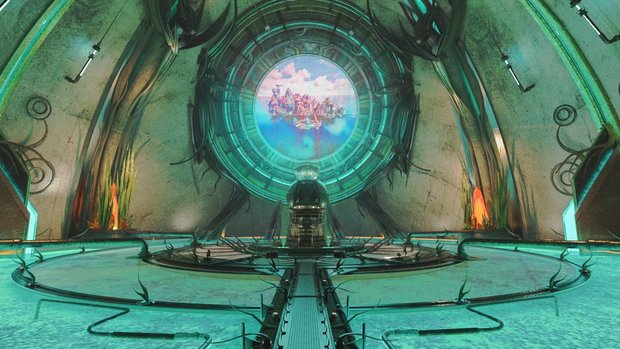
It's a smaller hangup, but the game makes use of fancy (and sometimes almost illegible) fonts for these notes and journals. In most cases, you can click on the writing to replace the words with a plain text version that's far easier to read, though the implementation seems a bit clumsy. Strangely, you can't always do this font substitution, with no clear rhyme or reason why it only works most of the time. And while some of these journals can be picked up and taken with you to be re-read at any time, others remain in their location once you stop reading. Generally speaking, it's the ones with important information that become inventory objects – but again that's not always the case, and the lack of consistency threw me off a little.
Puzzle-wise, Neyyah delivers a mix of satisfying brainteasers and utterly confounding ones. Score another point for historical authenticity. The best puzzles tend to involve careful observation in the environment to follow pipes, wiring, or even mine cart tracks to determine how changing something in one area can have an impact elsewhere. But the puzzle similarities to its inspiration mostly end there. Where Riven (notoriously the most blisteringly sadistic of the Myst series) requires players to catch onto subtle environment clues to decipher a fictional language and unlock its epic-scale mechanisms, Neyyah's main source of challenge comes from giving players a massive world to keep track of, where the cause-and-effect from activating its numerous bits of machinery can be bewilderingly obtuse. I could have done with a bit more clarity on how some of its sprawling systems connected. Particularly in the back half of the game, the experience became a mind-boggling series of back and forth treks between various in-game computer consoles dotted all around the islands, each with a highly specialized function (and once again, loaded with confusing jargon that distances them from a memorable, real-world equivalent).
There's an insane number of these computers, and frequently you'll enter a room that has three to five of them accessible at once. You'll usually discover a computer long before you learn what you're supposed to do with it, and I found it really hard to remember which locations house which computers that do which things (and how they may or may not relate to the current objective). The amount of note-taking you'd have to do to keep track of it all without getting turned around is quite the exhausting ask... and even though I tolerated quite a lot of backtracking, making so many fruitless trips around the islands eventually started to wear on me. No amount of beauty can dull the feeling of traversing the same path so often that it becomes as familiar as a work commute.
Nearing the endgame, I struggled with the motivation to carry on without a walkthrough, not necessarily because I needed it, but because I knew not using one would mean wasting countless more hours traveling to the wrong zones until I finally found where I was supposed to be… and with over a dozen hours already spent getting to that point, I really just wanted to advance the story and see how it all panned out! This portion of the game, with so much aimless wandering (unless you're remarkably sharp or remarkably lucky), closes the final hours on a slightly sourer note than it could've, and probably should've, ended on.
Final Verdict
For all its small frustrations, I really enjoyed Neyyah and the way it paid tribute to Riven in a way that manages to be fanatically faithful and yet somehow very much its own thing. It is unlikely to win hearts and minds from people who dislike Myst games, but for those who fall in the other camp, there's loads to recommend here: gripping exploration, splendid vistas, and terrific atmosphere that all go beyond mere nostalgia. Much like the numerous portals dotting its landscape, playing this game offers players a window to an alternate late-90s timeline where the Myst games never evolved past their HyperCard-based roots. This may not sound like the most exciting or original premise for an adventure game, but in an industry obsessed with ever-evolving tech and a focus on going big, perhaps it’s no wonder that Neyyah's nostalgic nature warmly washes over you like a comforting smile from an old friend.
Hot take
With a supremely old-school gameplay format, Neyyah evokes the best aspects of Myst and Riven in a way we rarely see anymore. While it’s somewhat bound by its faithfulness to what's come before, the heart and soul behind this game shines a bright, cyan-tinged glow.
Pros
- A beautifully meditative experience
- Terrific sense of exploration
- Charmingly evokes a long-lost adventure game format
- Outstanding sound design
- Most of the puzzles are very satisfying to crack
Cons
- A whole lot of backtracking
- Too much obfuscation within its mechanical systems
- Long journals are a bit of a slog to read
Sean played Neyyah on PC using a review code provided by the game's publisher.


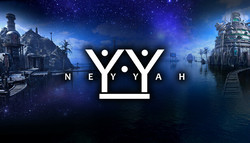


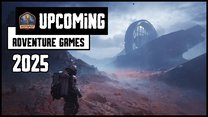
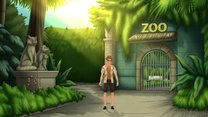




0 Comments
Want to join the discussion? Leave a comment as guest, sign in or register.
Leave a comment